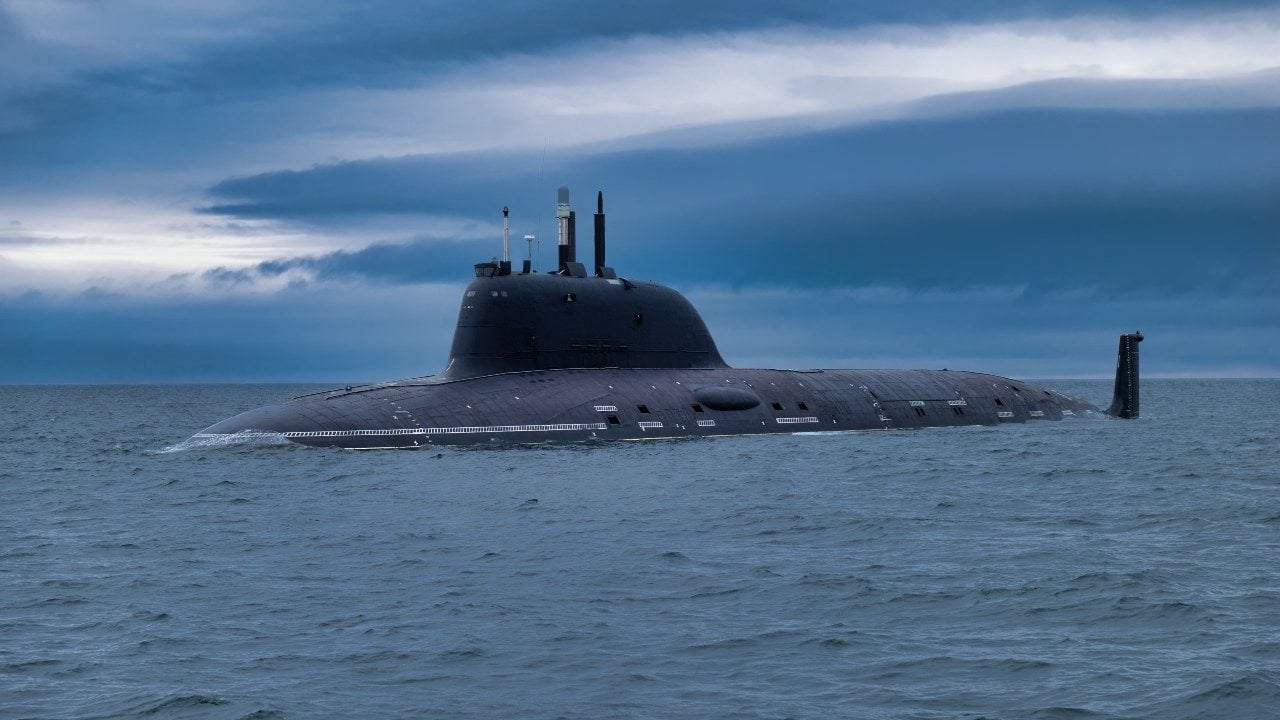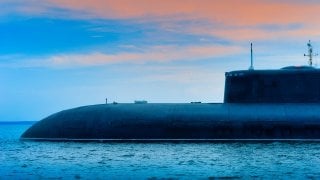Husky-Class: Russia's New Powerhouse Nuclear Submarine Is in Trouble
The Russian Navy is planning to modernize its submarine fleet with the introduction of the Husky-class nuclear-powered attack submarine, designed as a replacement for the aging Akula and Sierra-class submarines.
Summary: The Russian Navy is planning to modernize its submarine fleet with the introduction of the Husky-class nuclear-powered attack submarine, designed as a replacement for the aging Akula and Sierra-class submarines. With development starting in 2014 by the Malakhit Design Bureau, the Husky-class aims to be a versatile and quieter vessel, featuring advanced weaponry including hypersonic missiles, a vertical launch system, and sophisticated torpedoes. Despite its promising capabilities, the program has encountered significant delays, exacerbated by the ongoing conflict in Ukraine, which has diverted resources towards more immediate military needs like tanks and aircraft. The projected service entry by 2030 highlights the urgency for Russia to update its submarine fleet to maintain its naval prowess.
Russia's Future Submarine Power: The Husky-Class Set to Revitalize Naval Capabilities by 2030
The Russians have long been skilled at designing submarines. The Akula-class is one of their most iconic nuclear-powered submarines. Indeed, it along with the Russian Typhoon-class submarine, are Pop Cultural icons in most modern Western submarine films. The Sierra-class, too, is a renowned—and rare—Russian submarine because of its unique titanium hull.
Yet, the Akula and Sierra, while being cutting-edge submarines for their time (and still quite relevant today) are aging. Moscow understands that it must replace these systems soon with similar, or better, submarines.
Enter the Husky-class submarine that is intended as a low-cost replacement for the Akula and Sierra-classes. Some submarine analysts have noted that the Husky-class bears striking similarities with another Russian submarine, the Yasen-class.
This is because the proposed Husky-class has a cruciform tail and two part control surfaces. The Husky-class will carry with it a single integral towed sonar array in the upper rudder, according to the defense website H.I. Sutton.
The Malakhit Design Bureau is responsible for the creation of this submarine. Early designs began back in 2014 and have slowly matured since then.
But will this new sub ever really sail?
The Purpose of the Husky-Class
While much is unknown about this new attack submarine that Russia intends to carry their sub fleet into the next few decades, what is known is that the Husky-class has a total displacement of 11,340 tons. It has a maximum cruising speed of about 35 knots (or 40 miles per hour), making it a very fast submersible.
This proposed new Russian nuclear-powered attack submarine will also have six 35mm torpedo tubes onboard. She will have a Vertical Launch System (VLS) that can fire Russia’s vaunted .3M14 Biryuza (Kalibir) land-attack cruise missiles. The Kalibir is a cutting-edge hypersonic weapon. Speaking of hypersonic capabilities, the Husky will carry with it .3M22 Zircon hypersonic anti-ship missiles, ensuring that this submarine is well-protected and can pack a wallop against all possible enemies. It will have .3M55 Onikssupersonic anti-ship/ land attack cruise missiles. She will be able to deploy Fizik-1 and USET-80 torpedoes.
It is suspected that other weapons capabilities will include anti-submarine missiles as well as anti-submarine mines. The Husky brings Igla point-air defense missiles along for good measure, as well.
So much secrecy has surrounded the Husky-class that there aren’t many firm details about it. What is suspected by Western intelligence services is that these submarines will be less attack submarines as the Akulas were and more multipurpose subs. These submarines will be outfitted with a different kit, depending on whatever mission they are being deployed on.
Further, Russian designers were quoted in Russian media as describing the general capabilities of the Husky-class. For starters, they are lighter than their predecessors making them more maneuverable.
These subs are highly automated.
The Husky is smaller than its predecessors as well. But the biggest point of attention for the sub designers at Malakhit is the reduction of noise.
While Russian submarines are notoriously quiet, Malakhit believes it can make the Husky-class quieter. Much attention has been given to that objective since the inception of the Husky-class.
The Husky-Class: Coming Never?
The Husky-class could be a great addition to the Russian Navy’s fleet that will give the Americans and their partners headaches at sea for years. Yet, the Husky has suffered through seemingly endless delays. These delays have likely been exacerbated by the initial strain that the Ukraine War placed on the Russian defense industrial base.
Russia believes it will have the first Husky-class serving in the fleet by 2030. That means that the Akula-class will have served in the Russian Navy for nearly 50 years.

To say that the Russian Navy is in dire need of a next-generation nuclear-powered attack submarine is an understatement. Whatever promise this new Husky-class holds, though, with the Ukraine War raging, it seems unlikely that such a new and expensive system will be streamlined into service.
Russia needs more tanks and ground equipment (as well as more warplanes) much more than it needs more attack submarines.
About the Author
Brandon J. Weichert, a National Interest national security analyst, is a former Congressional staffer and geopolitical analyst who is a contributor at The Washington Times, the Asia Times, and The-Pipeline. He is the author of Winning Space: How America Remains a Superpower, Biohacked: China’s Race to Control Life, and The Shadow War: Iran’s Quest for Supremacy. His next book, A Disaster of Our Own Making: How the West Lost Ukraine, is due October 22 from Encounter Books. Weichert can be followed via Twitter @WeTheBrandon.


